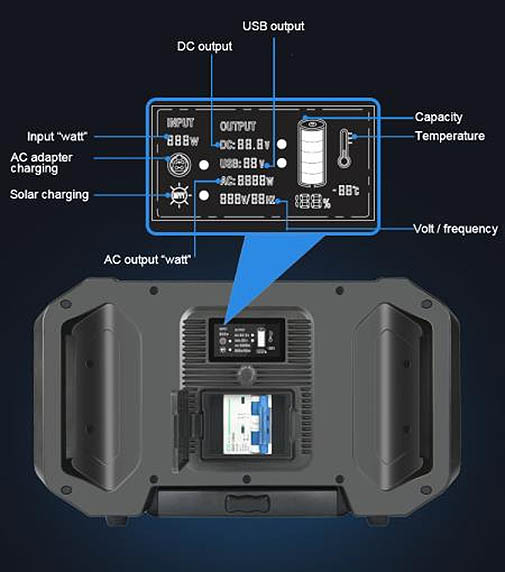The NEVI-funded EV fast-chargers at a New York site underperformed and offered a subpar user experience.
Through the Bipartisan Infrastructure Law, the federal government and states are spending $7.5 billion to deploy fast-chargers across the U.S. Sophia Davirro/GreenBiz Best Home Charger For Ev

Public electric vehicle (EV) charging has long been plagued by broken or unusable equipment, and the Bipartisan Infrastructure Law sought to remedy that through the National Electric Vehicle Infrastructure (NEVI) Formula Program. NEVI created first-of-their-kind EV charging reliability rules requiring 97 percent uptime or greater per dispenser — the total amount of time a charging station dispenser is working and can provide a charge — and minimum standards for fast-chargers.
Despite promises of improved reliability, my experience at a NEVI-funded charging site in New York, one of the first deployments in the country, revealed the same frustrating issues we've come to expect from public EV charging.
Through the Bipartisan Infrastructure Law, the federal government and states are spending $7.5 billion to deploy fast-chargers all across the U.S.
The law is designed to push the public EV charging industry to become more reliable. In addition to requiring 97 percent uptime, chargers must also offer contactless payments and credit card readers among other user-experience improvements. In a way, the standards are intended to get the quality of public charging up to where Tesla’s Supercharging has been for years. Tesla is known for setting the industry standard for EV charging reliability.
NEVI charging stations are starting to finally roll out after years of waiting and increasing criticism for deployment delays. One of the first deployments is in New York state, and having experienced it firsthand, it’s clear that promises of improved reliability are one thing, but the reality is more of the same: nonfunctioning chargers and a non-user friendly experience.
What’s ironic is that New York state also just announced an additional $13 million award from the federal government to repair and replace broken EV chargers.
I was driving a R1T Dual-Motor Max pack with an estimated range of 410 miles and charged to 60 percent.
There was a winter weather advisory in New York City on Jan. 19, with 1-3 inches of snowfall expected throughout the day and temperatures fluctuating around 20 degrees Fahrenheit.
The EV road trip began in New York City in a Rivian R1T Dual-Motor Max pack. Photos by Vartan Badalian/GreenBiz
The distance from Rivian’s Manhattan Meatpacking District location to the charging site in Kingston, N.Y., was roughly 95 miles, or a little under two hours driving.
The R1T was a joy to drive, the battery held up well during the journey and it automatically started "preconditioning" itself 45 minutes from the charging site to ensure the best charging speeds.
The charging site had four 350-kW Electrify America chargers. The stations were installed under the EVolve NY umbrella, which is New York Power Authority’s EV charging brand. Here is a rundown of the site. Keep in mind that it was installed only a little over a month ago:
Station 1 and Station 3 (the station I charged on) had malfunctioning credit card readers, allowing charging only through the app.
Station 2 had an unusable screen that was entirely black, but I did see a driver charge her Bolt EV through her Electrify America phone app.
Station 4 was 100 percent down/unusable.
I treated my experience as a new EV customer would. While I had downloaded the Electrify America app, I did not have an account. I wanted to charge as a "guest" because I wanted the fastest experience — plugging in and charging without having to create a user account. That’s when I found out the credit-card reader wasn’t working, which resulted in the session canceling and required me to unplug the vehicle.
Kingston, N.Y., is the site of the state’s first NEVI-funded charging location.
Frustrated, I created an account, added my credit-card details and finally loaded $40 into an Electrify America account; this wasn’t ideal — the charging station should have just charged me directly through my card. I then had to replug and initiate charging through my phone.
But even then, not at full power. The Rivian was only charging at 102 kW, and the vehicle was notifying me that the station was limiting power to my vehicle, I assume due to colder weather. (By contrast, the Tesla Supercharger experience, discussed below, provided speeds up to 142 kW.) I charged from 23 percent to 69 percent, costing me $31.05 and consuming 69 kWh.
When I first arrived at the site, a driver seemed to be successfully charging her vehicle at Station 1. However, midway through, she left and a driver of a Toyota bZ4X pulled in to charge. He immediately became frustrated with the credit card reader not working, and I stepped out to help him.
I then drove from Kingston, N.Y., to a Tesla public charging location 65 miles away in Brewster, N.Y. The drive was roughly one hour long, and I arrived with 32 percent charge remaining.
The site had eight 250-kW stations. I had the Tesla app installed on my phone but treated the experience like a new EV driver.
A Tesla public EV charging location in Brewster, N.Y.
I easily located the charging site on the map and pulled into an available station; six other Teslas were charging at the time. Tesla doesn’t allow "guest charging," so I had to add my credit card information to my account; the instructions were simple. I then selected a numbered station corresponding to what was available in the app and plugged in. Within 20-30 seconds, the vehicle was charging at 142 kW even though it did not precondition en route to this location. I charged up and it cost me $31.62. While my experience was very easy, Tesla’s public EV charging experience has recently been a topic of debate on LinkedIn.
Public EV stations have always been plagued by unreliable chargers, deterring mass consumer adoption. NEVI’s reliability rules were supposed to address all that.
However, my experience at the first NEVI-funded station in New York was frustrating. It would not let me charge as a guest. The credit-card reader malfunctioned. And half the chargers were unusable as advertised. That’s simply unacceptable for a four-charger site, especially given how new it is.
The Joint Office of Energy and Transportation could not be reached for comment. New York Power Authority (NYPA) provided this statement:
"The New York Power Authority (NYPA) takes uptime on its fast-charging network seriously and is committed to bringing easy fast charging to more New Yorkers at convenient locations throughout the state. We remotely monitor our EVolve NY fast charging sites, check PlugShare reviews regularly and have service agreements with our vendors to ensure that all issues are addressed in a timely manner. We are committed to the customer experience and to responding to any identified items expeditiously."
NYPA also said that Electrify America did return to the charging site Jan. 20 after my visit to conduct routine maintenance and fix the dark screen and credit card reader. I’ve not been able to verify the stations are all working correctly, though. According to NYPA, Electrify America indicated that the charger was providing all the power the Rivian was requesting, which is different from what the vehicle indicated during my charging session.
The EV industry is in a transitional period where manufacturers and charging companies are adopting Tesla’s North American Charging Standard in the hopes of giving their drivers reliable and seamless service.
The unfortunate part is that for the time being, the federal government is funding more of what we’ve come to sadly expect from public EV charging — charging stations that give you a small dose of anxiety and a whole lot of frustration.
[Want more great analysis of electric and sustainable transport? Sign up for Transport Weekly, our free email newsletter.]
Get articles like this delivered to your inbox

Public Car Charging Stations Connect with 2,500+ professionals at GreenBiz 24 (Feb. 12 -14, Phoenix, AZ) to gain fresh perspectives that will help you accelerate your company's sustainability goals.